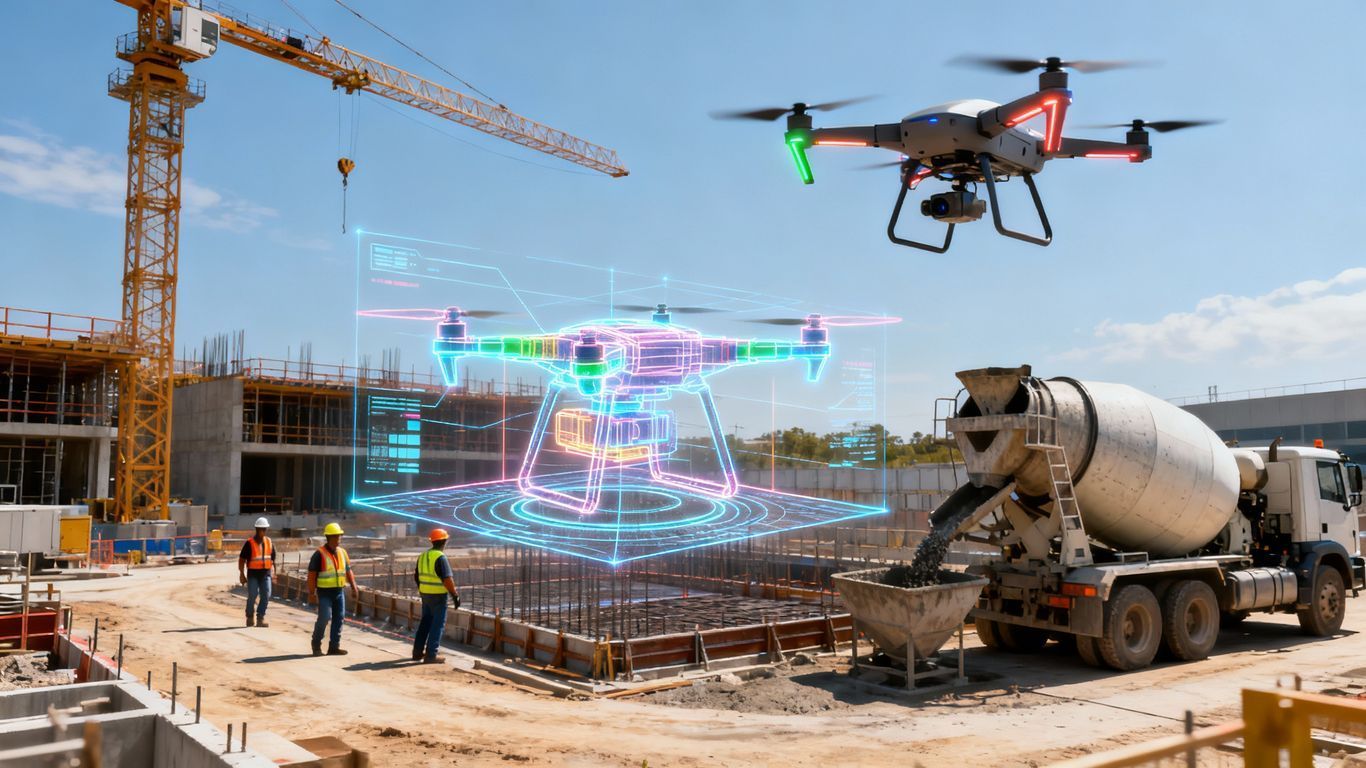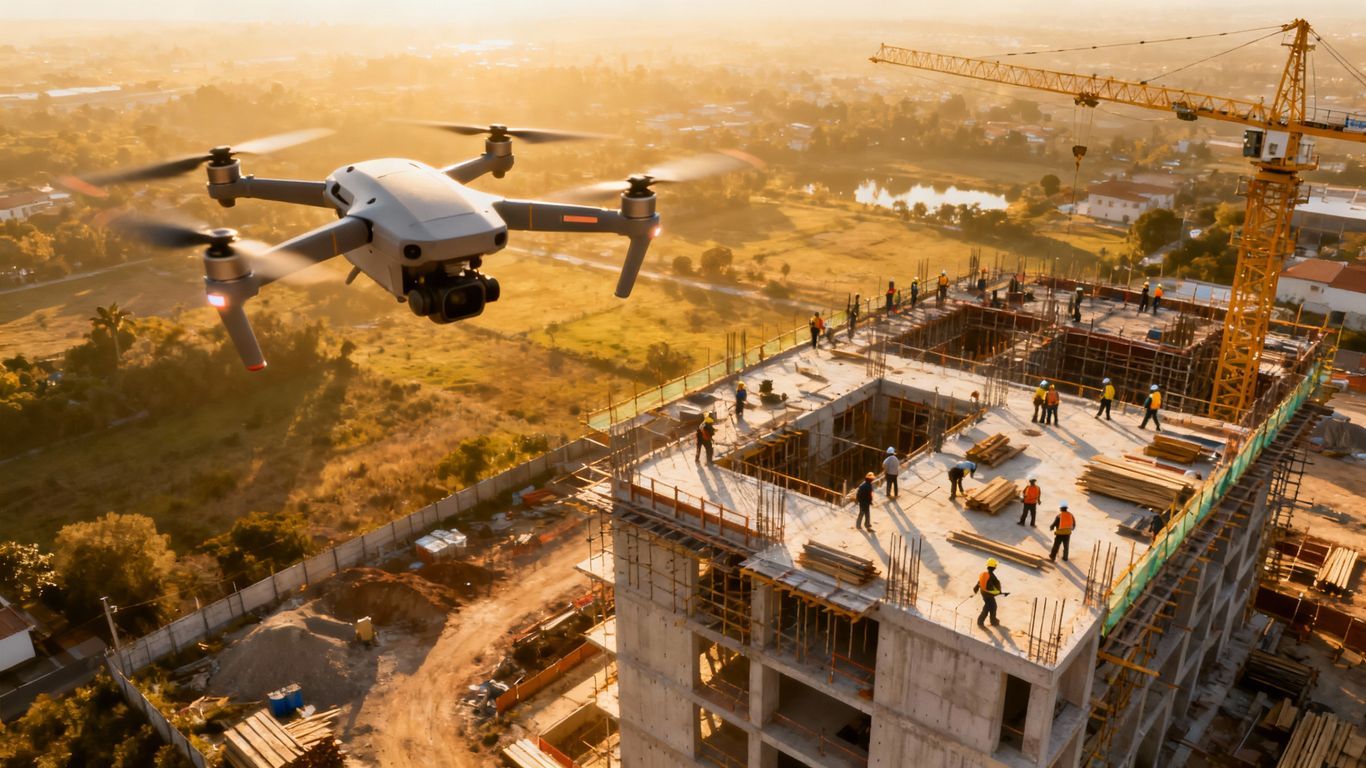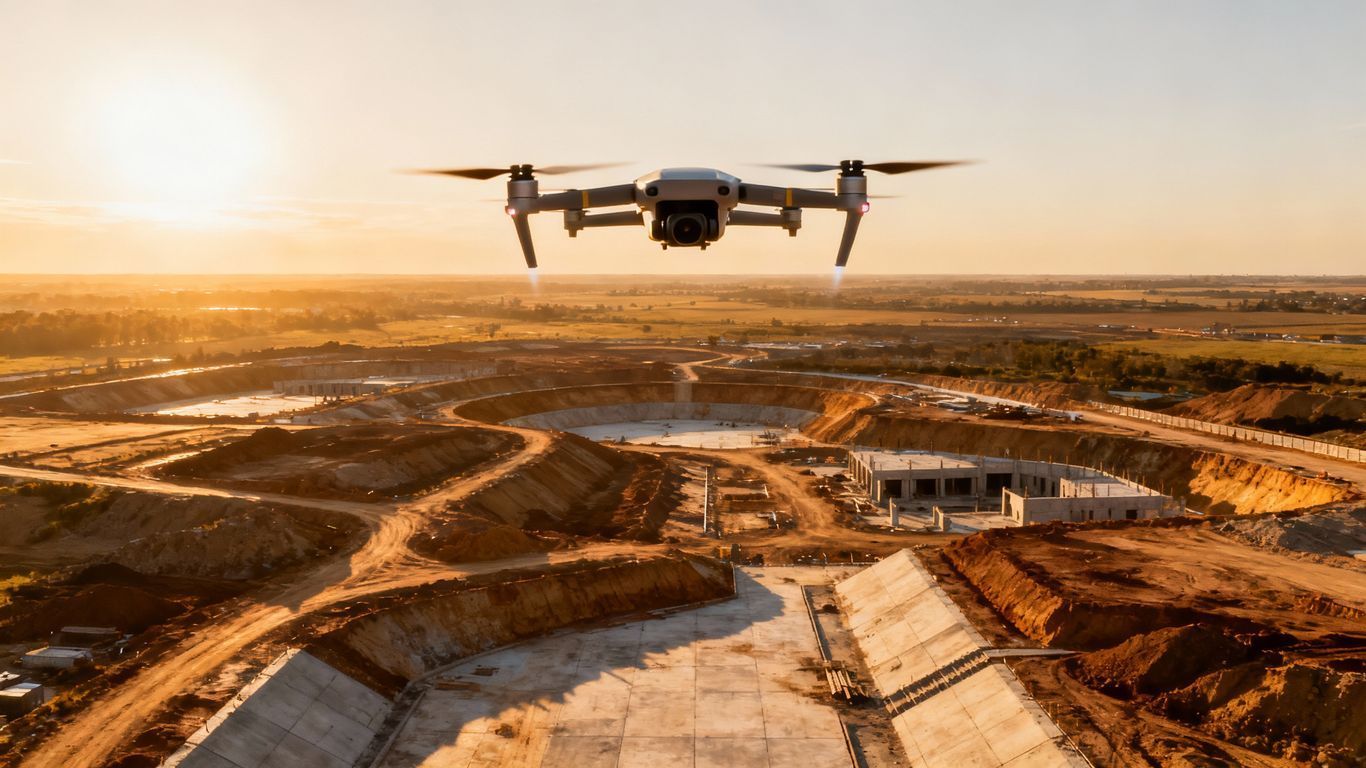How Thermal Roof Inspection Boosts Business Efficiency
You have a problem with your commercial roof, but you cannot find it.
Just look up.
You might spot a few stains on the ceiling tiles.
Maybe you've seen those small pools of water.
They collect on the street right after a powerful rainstorm.
A quick look might not have found the problem.
That's when a thermal roof inspection often steps in as the next best option.
Nothing beats the sheer frustration of a problem you can feel in your gut but just can't locate with your eyes.
Now, imagine that same headache hitting a huge business building.
Today, we'll cover how thermal roof inspections can help in such situations.
Ready to view your construction project from new heights?
Contact 1st Choice Aerials today to schedule your aerial photography, inspection, or thermal imaging service!
On This Page:
What Is a Thermal Roof Inspection?
Think about how a detective looks for clues invisible to the naked eye.
A thermal inspection does something similar for your roof.
It uses a special infrared camera, also known as a thermal imaging camera, to see heat instead of light.
This method does not look for the water itself, but instead for the temperature differences that roof moisture causes.
The process gathers data to create a clear thermal map of your roof.
This map shows exactly where potential problem areas are hiding beneath the surface.
The Science of Seeing Heat
Dry insulation and roofing materials lose their heat quickly after sunset.
However, any areas with trapped moisture intrusion under the roof membrane will hold onto that heat much longer.
An infrared sensor can detect these temperature variations with amazing accuracy.
These warmer spots show up as bright areas on the thermal image, providing a visual guide to follow.
According to the Department of Energy, heat moves from warmer to cooler objects, which is the principle these cameras capture.
The high-quality thermal data helps in identifying temperature anomalies across the roof scan.
The best time to perform a thermal roof scan is after sunset.
This timing gives the dry areas of the roof enough time to cool down.
The wet, problem areas will stand out brightly against the cooler background, making them easy to spot.
A Real-World Example: An 80,000 Square Foot Problem
Let me tell you about that job in Ohio.
We were called out to a huge 80,000 square foot commercial building.
The owners knew they had a leak, but they were stuck.
They had a TPO roof, which is a very common and durable single-ply membrane.
They had already tried traditional methods to inspect roofs.
They even did core samples, cutting into the roof to see what was underneath.
But those samples came back inconclusive.
They cut holes in their roof and still had no answers.
That is when they decided they needed to try something different, so they commissioned our thermal inspection.
How a Drone Thermal Roof Inspection Works
We do not need to walk all over your roof to find roof defects.
Today, we use advanced drones equipped with high-resolution thermal cameras.
This approach is safer, faster, and gives a much better view of the entire surface, turning what could be a dangerous job into a streamlined data collection mission.
For the Ohio job, we arrived on-site and waited for the right weather conditions after sunset, primarily low wind speed.
We set up our ground control station at a safe distance.
This included our drone, a landing pad, and controllers to pilot the aircraft.
Public safety is always first, and our pilots adhere to a strict privacy policy.
We use flight tracking apps to monitor the airspace for any other aircraft, maintaining full situational awareness.
This lets us focus completely on the data acquisition mission without any surprises.
Capturing the Data from Above
Once conditions were right, we launched the mapping drone after a brief test flight.
The drone flew over the building in a pre-programmed, automated grid pattern planned within the pilot app.
This systematic approach, sometimes enhanced with RTK technology for centimeter-level accuracy, makes sure we capture a complete picture of the entire roof surface without missing any critical areas.
We flew the thermal drone so that it was always within our visual line of sight.
While it flew its automated path, we monitored the live aerial thermal feed from the imaging camera.
We could immediately see if our settings needed adjustment to get the clearest possible thermal imagery.
The whole process of gathering data is very efficient.
After the automated flights were complete, we landed the drone.
Before packing up, we did a quick review of the drone data on-site to be certain we had everything we needed for a comprehensive thermal analysis.
Analyzing the Thermal Images

Capturing the images is only half the battle.
The next day, back in the office, we begin the data analysis.
We start the data processing by stitching all the individual pictures together to create one giant thermal map of the roof.
This large, detailed map is called an orthomosaic.
It gives us an amazing top-down view.
We can zoom in on tiny details across the entire roof surface from our computers, looking for issues invisible to the naked eye.
We look for those telltale bright, warm spots, but experience is essential here.
Not every hot spot indicates moisture from a leak.
Sometimes, other technologies like acoustic imaging or physical tools like laser distance meters can complement the findings, but the thermal data is the primary guide.
What Did We Find on the Ohio Roof?
When we looked at the data from the 80,000 square foot roof thermal inspection, we saw several key findings.
There were many very bright spots on the thermal map.
But a lot of them were coming from the building's vents, which is a common finding in many industrial applications.
This particular building was very hot on the inside.
That heat was escaping through the vents, making them glow on the thermal camera.
An untrained eye might mistake these for major leak areas, leading to incorrect and costly repair recommendations.
We also found a few other minor thermal anomalies.
One spot was actually cooler than the surrounding roof.
This showed something was different in that area, but it definitely was not trapped moisture because it would have been warmer.
Pinpointing the True Source
After filtering out the vents and other minor issues, we zeroed in on the real problem.
There was a section of the roof with standing water.
That is a bad sign on its own, as a flat roof is designed to drain efficiently.
Looking closer at the thermal and visual data, we saw what appeared to be organic material growing in the puddle.
This suggested the water had been sitting there for a very long time.
This was almost certainly the source of the leak into the building.
Without the full context of the thermal mapping, it would have been a guessing game.
But the drone data pointed us directly to the source.
The building owners finally had a clear, actionable plan to fix their persistent leak as part of their facility maintenance program.
Why Thermal Inspections are Better
So why go through all this with a thermal drone and special cameras?
Why not just keep doing core samples?
Let's compare the methods for roof inspections.
| Feature | Traditional Inspection (Core Samples) | Thermal Roof Inspection |
|---|---|---|
| Method | Physically cutting holes in the roof. | Non-contact scan using an infrared roof camera. |
| Coverage | Samples only tiny, specific spots. | Scans 100% of the entire roof surface. |
| Damage | Destructive; each sample is a new potential leak point. | Non-destructive; no contact with the roof. |
| Accuracy | Hit or miss; easy to miss the problem area. | Highly accurate map of all problem areas. |
| Speed | Slow and labor-intensive process. | Very fast data capture, often in a single night. |
The biggest benefit of thermal roof inspections is that it is a non-destructive process.
You do not have to damage your roof to find out what is wrong with it.
This aligns with modern building maintenance philosophies focused on preservation.
You also get a complete picture of your roof thermal condition.
A core sample is just a guess. You could cut ten samples and still miss a leak that is a few feet away.
A roof scan removes the guesswork entirely, providing a visual roadmap for repair crews.
They can walk onto the roof and go directly to the compromised sections.
This efficiency saves time, reduces labor costs, and minimizes disruption to building operations.
Who Needs a Thermal Roof Inspection?
This technology is helpful for many businesses and industries.
If you manage any large physical asset, seeing the unseen can save you a lot of money.
You address problems before they become catastrophic failures.
Here are just a few examples:
- Commercial Real Estate Owners: Find leaks and assess roof health before buying or selling a property. This information can be vital during due diligence and helps in planning for capital expenditures with real data.
- Facilities Managers: Create a proactive maintenance program based on actual roof conditions. Instead of reacting to leaks, you can repair weak spots before they fail, extending the roof's life.
- Construction Companies: Verify that a newly installed roof is sound and free of defects. Check for installation errors before handing the building over to the client, which can prevent future warranty claims.
- Solar Installers: Inspect the roof's integrity before adding the weight of a solar array. A weak roof with undetected moisture cannot adequately support a new installation.
- Public Safety & Law Enforcement: Drones with thermal sensors are incredible public safety solutions. They are used by law enforcement for situational awareness on rooftops during operations, without putting personnel in harm's way. This is just one of many safety solutions this technology provides.
The information from a roof inspection helps you make smarter business decisions.
It replaces assumptions with concrete evidence.
That shift can protect your investment and your bottom line, much like using precise electrical tools or calibration tools in other technical fields.
Conclusion
When you are facing a mysterious roof leak, you need clear answers.
Guessing is expensive, and cutting holes in your roof just adds more risk.
A modern, drone-based thermal roof inspection gives you the clarity you need to act.
We saw this firsthand on the job in Ohio.
After old methods failed, our thermal data pinpointed the problem in a single night.
We gave the client a map that showed exactly where to direct their repair efforts, saving them time, money, and the frustration of not knowing.
The proper thermal inspection provides the real story of your building's most important asset.
Ready to view your project from new heights?
Contact 1st Choice Aerials today to schedule your aerial photography, inspection, or thermal imaging service!





